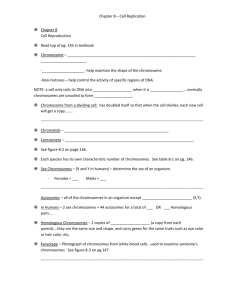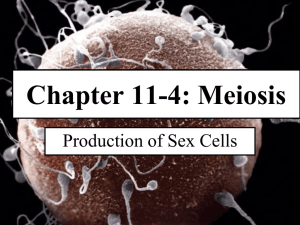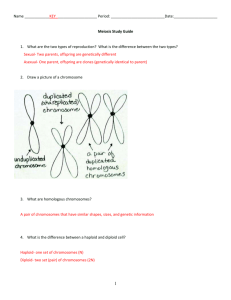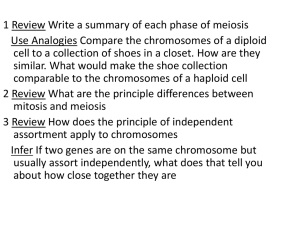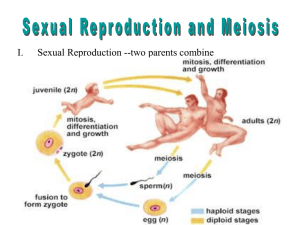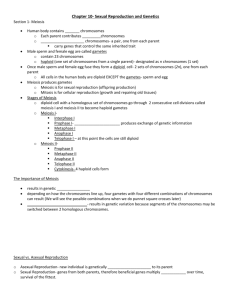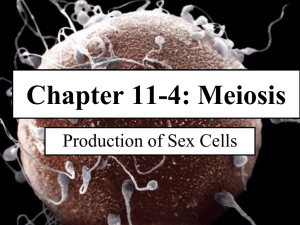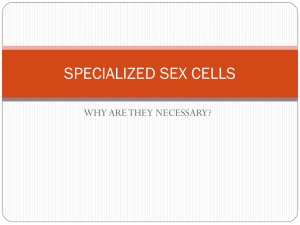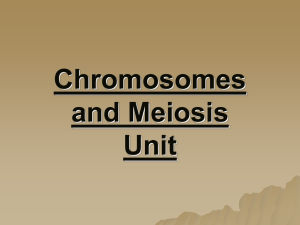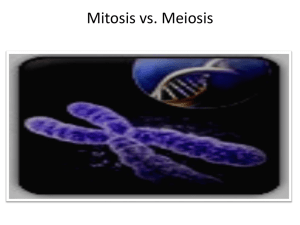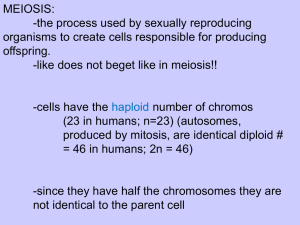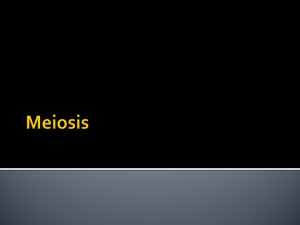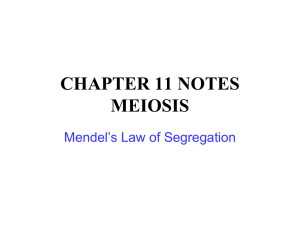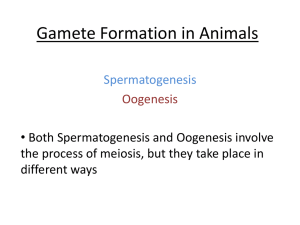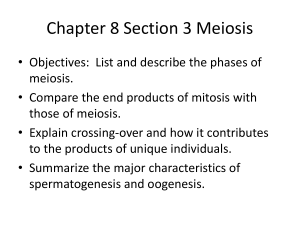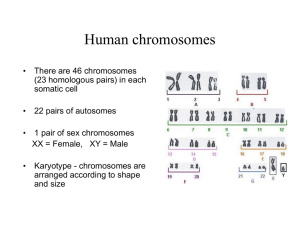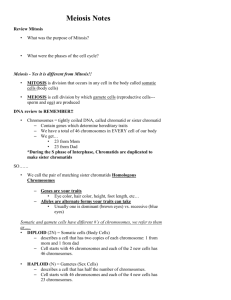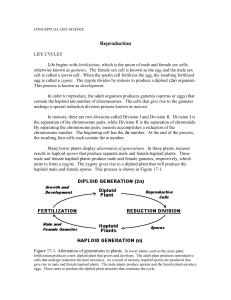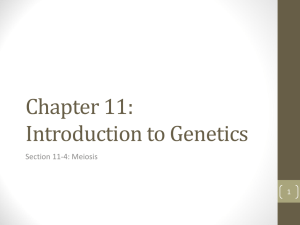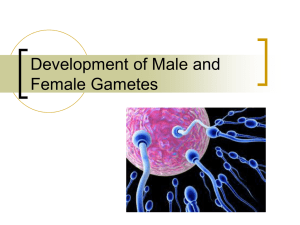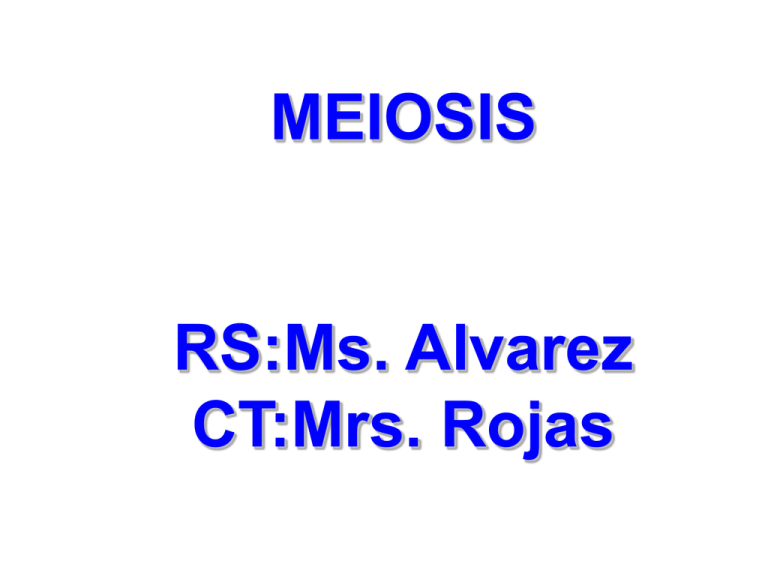
MEIOSIS
RS:Ms. Alvarez
CT:Mrs. Rojas
Two different types of cells are found in
sexually reproducing organisms
1. Somatic Cells: are “body” cells that have a
normal number of chromosomes ….called the
“Diploid” number (the symbol is 2n). Examples
would be … skin cells, brain cells, etc. They
divide through mitosis.
2. Germ cells: are the “sex” cells and contain only
½ the normal number of chromosomes…. called
the “Haploid” number (the symbol is n)….. Sperm
cells and ova(egg) are gametes. They divide
through meiosis.
Meiosis
• Meiosis is the type of cell
division by which germ
cells (eggs and sperm)
are produced. Meiosis
involves a reduction in
the amount of genetic
material.
• Meiosis involves one
round of DNA replication
and two successive
nuclear divisions.
How sex cells are produced
Secondary Spermatocyte
n=23
human
sex cell
2n=46
sperm
n=23
Primary Spermatocyte
n=23
Secondary Spermatocyte
haploid (n)
n=23
diploid (2n)
n=23
4 sperm cells are
produced from each
primary spermatocyte.
meiosis I
n=23
meiosis II
Fertilization
• The fusion of a sperm and egg to form a zygote.
• A zygote is a fertilized egg
n=23
egg
sperm
n=23
2n=46
zygote
Chromosomes
• Diploid organisms (2n) have two matching homologues
chromosomes. One from mom (mom’s DNA).… the other
from the dad (dad’s DNA).
• Most organisms are diploid. Humans have 23 sets of
chromosomes… therefore humans have 46 total
chromosomes….. The diploid number for humans is 46
(46 chromosomes per cell).
Homologous Chromosomes
(because
a homologous pair consists of 4 chromatids it is called a “Tetrad”)
eye color
locus
eye color
locus
centromere
hair color
locus
hair color
locus
Paternal
Maternal
During Prophase I
“Crossing Over” occurs.
Crossing Over is one of the Two major occurrences of Meiosis
• During Crossing over segments of
nonsister chromatids break and reattach
to the other chromatid. The Chiasmata
(chiasma) are the sites of crossing over.
Crossing Over Occurs During Prophase I
creates variation (diversity) in the offspring’s traits.
Tetrad
nonsister chromatids
segments of nonsister chromatids break and reattach
to the other chromatid
chiasmata: site
of crossing over
variation
Question:
• A cell containing 20 chromosomes (diploid) at the
beginning of meiosis would, at its completion,
produce cells containing how many chromosomes?
10 chromosomes (haploid)
• A cell containing 40 chromatids at the beginning of
meiosis would, at its completion, produce cells
containing how many chromosomes?
10 chromosomes (haploid)



